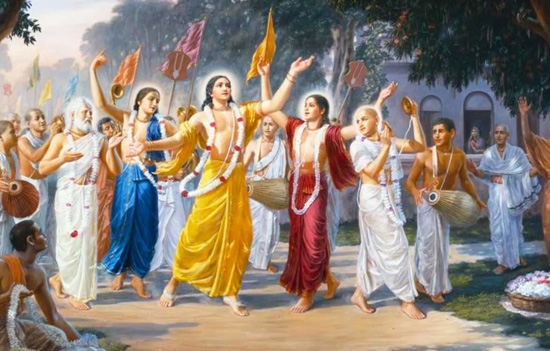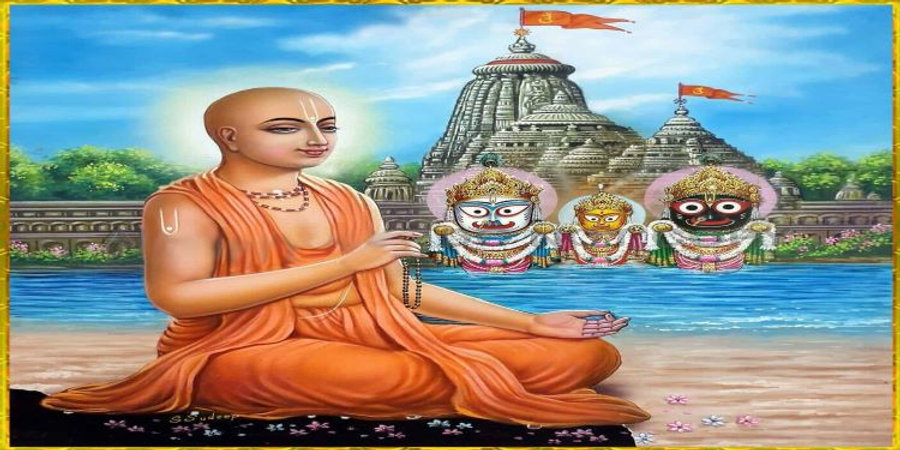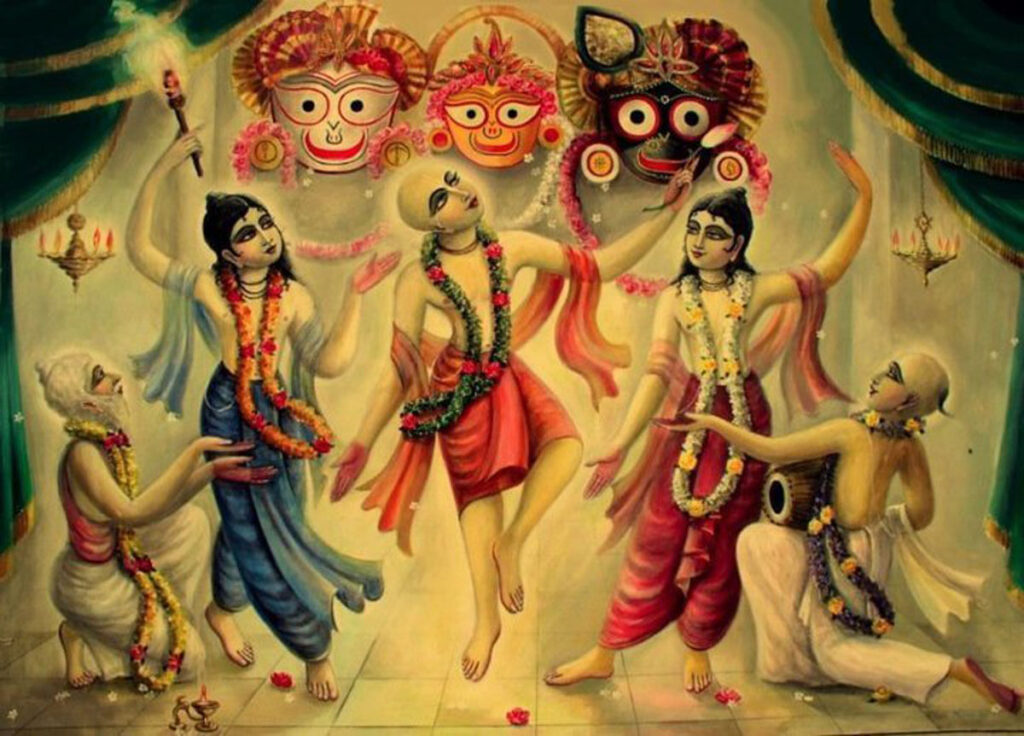Influence of Sri Chaitanya Bhakti in Odisha, a state known for its rich cultural heritage and religious fervor, has been greatly influenced by the teachings and philosophy of Sri Chaitanya Mahaprabhu, the 16th-century saint and social reformer. His Bhakti movement, emphasizing devotion to Lord Krishna, had a profound impact on the religious and cultural landscape of this eastern Indian state.
Sri Chaitanya Mahaprabhu, also known as Gauranga due to his golden complexion, spent a considerable part of his life in Odisha, particularly in the holy city of Puri. His teachings and charismatic personality attracted a large number of followers, who came from far and wide to seek his blessings and guidance.

One of the most significant contributions of Sri Chaitanya Bhakti to Odisha is the establishment of the Jagannath temple in Puri as a prominent center of devotion. Chaitanya Mahaprabhu considered Lord Jagannath, the deity worshipped at the temple, to be non-different from Lord Krishna. His teachings and love for Jagannath fostered a deep devotion among his followers and influenced the rituals and traditions of the temple. The annual Rath Yatra festival, in which the deities of Lord Jagannath, his brother Balabhadra, and sister Subhadra are ceremonially pulled on large chariots, is a testament to the enduring influence of Sri Chaitanya Bhakti in Odisha.
Another area greatly impacted by the teachings of Sri Chaitanya is literature and art. Odisha has a rich tradition of poetry, songs, and dance forms, and Chaitanya Mahaprabhu’s philosophy had a profound influence on these expressions. The Bhakti movement inspired poets and writers in Odisha to compose devotional songs known as Bhajans and Kirtans. These songs were typically sung in praise of Lord Krishna and were aimed at invoking a sense of devotion and love for the divine. Even today, these devotional songs form an integral part of religious gatherings, festivals, and celebrations in Odisha.
You can read our another post on Odisha Rasagola: Recognition at Last

Sri Chaitanya Bhakti also played a crucial role in social reform in the region. Mahaprabhu’s teachings emphasized oneness and equality, rejecting any discrimination based on caste or social hierarchy. This egalitarian philosophy had a transformative effect on the society of Odisha, encouraging inclusiveness and leading to the breakdown of social barriers. Even today, Chaitanya’s message of universal love and compassion continues to inspire social and cultural movements in Odisha, promoting harmony and unity among its diverse population.
The impact of Sri Chaitanya Bhakti in Odisha is not limited to religious and cultural spheres. It has also had economic implications. The influx of followers and devotees who visited Puri and other holy places associated with Chaitanya Mahaprabhu contributed to the growth of trade and commerce in the region. Artisans and craftsmen flourished as they catered to the demands of the pilgrims, creating intricately designed sculptures, paintings, and other religious artifacts.
In conclusion, the influence of Sri Chaitanya Bhakti in Odisha cannot be overstated. His teachings and philosophy have left an indelible mark on the religious, cultural, social, and economic fabric of the state. The love and devotion for Lord Krishna, fostered by Chaitanya Mahaprabhu, continue to be celebrated and practiced in Odisha, making it a veritable bastion of Bhakti and spirituality.

Write A FAQ For Influence of Sri Chaitanya Bhakti in Odisha
What is the influence of Sri Chaitanya Bhakti in Odisha?
Sri Chaitanya Bhakti refers to the devotional movement started by Sri Chaitanya Mahaprabhu in the 16th century. In Odisha, this movement had a significant influence on the religious and cultural landscape. The teachings of Sri Chaitanya had a profound impact on the practices of Vaishnavism, leading to the establishment of numerous mathas (religious institutions) and the propagation of devotional practices such as kirtan (group chanting), pilgrimage, and deity worship.
How did Sri Chaitanya Bhakti influence the cultural fabric of Odisha?
The devotion to Lord Jagannath, a major deity in Odisha, became more prominent as a result of Sri Chaitanya Bhakti. The concept of ‘Rasalila’, the divine love dance of Lord Krishna and his consort Radha, gained immense popularity through the teachings of Sri Chaitanya. The Odia literature saw an upsurge in compositions focused on devotional themes, including kirtans, padas (poems), and abhanga (devotional songs).
Did the influence of Sri Chaitanya Bhakti extend beyond the religious domain?
Yes, the influence of Sri Chaitanya Bhakti expanded beyond the religious realm in Odisha. It had a significant impact on various art forms such as music, dance, and drama. The Odissi dance form, which combines devotion, grace, and storytelling, was enriched by the devotional fervor brought by Sri Chaitanya’s teachings. The Odia language experienced a surge in bhakti literature, contributing to its cultural development.
How did Sri Chaitanya Bhakti impact the religious practices of Odisha?
Sri Chaitanya’s teachings emphasized the accessibility of the divine to all individuals, regardless of their social status. This egalitarian approach had a profound effect on the religious practices of Odisha. It led to the introduction of sankirtan (congregational chanting) as a means to attain spiritual growth. The practice of nama-dhyan (meditation on the Divine Name) gained prominence, encouraging individuals to develop a personal connection with the divine through chanting and remembrance.
What is the legacy of Sri Chaitanya Bhakti in present-day Odisha?
The influence of Sri Chaitanya Bhakti is still visible in Odisha today. Numerous mathas and temples dedicated to Lord Jagannath were established during this period and continue to thrive. The devotional practices propagated by Sri Chaitanya, such as kirtan and sankirtan, are integral parts of religious ceremonies and festivals in Odisha. The devotional literature and compositions from this era still inspire and guide spiritual seekers in their quest for divine connection.
